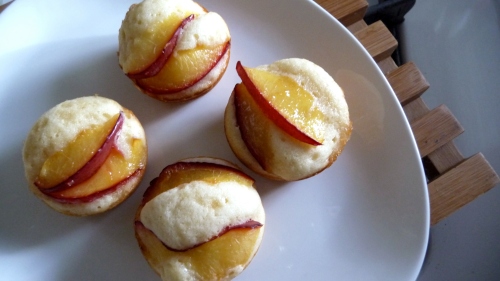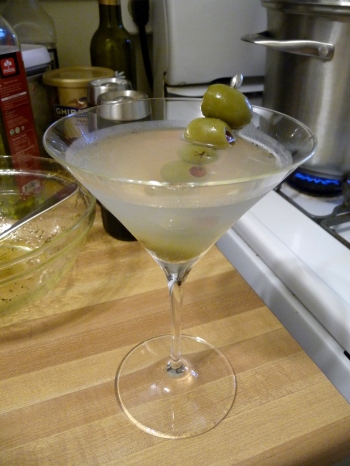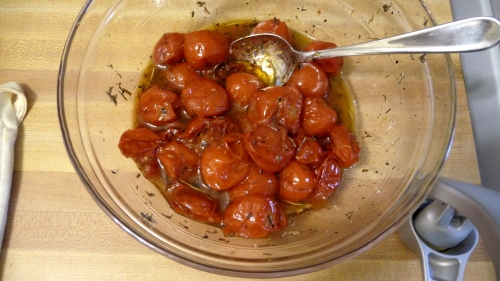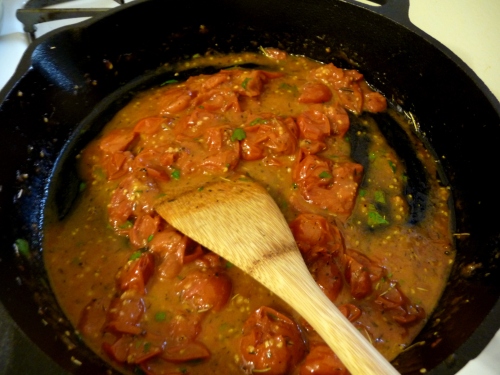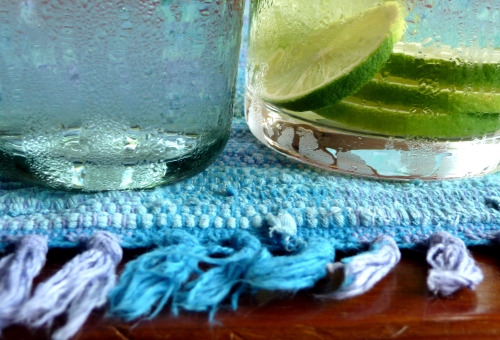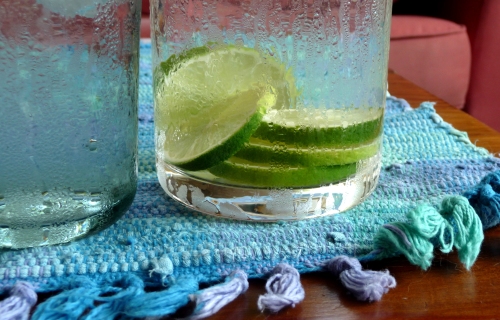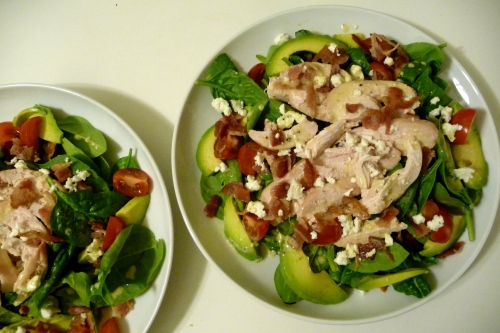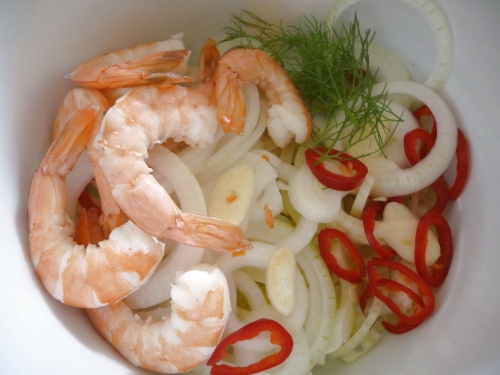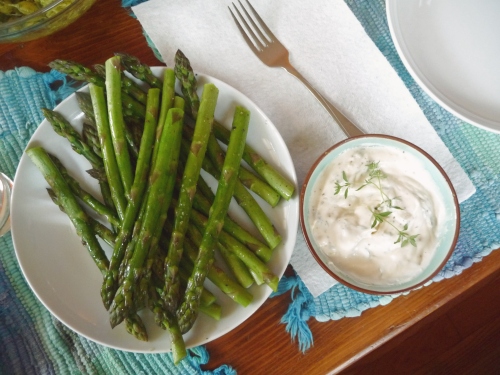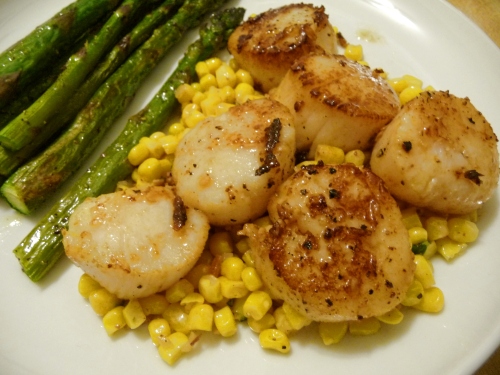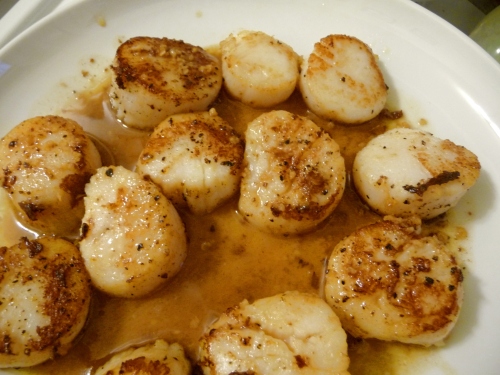Or, Bailey’s repertoire of strategies for getting me to feed him, along with my interpretations and evaluations of their efficiency.
1. The Lovey B Cat: Usually around 10:15 pm, if I am sitting on the couch, Bailey will suddenly appear snuggled up next to me. There is purring and kneading, or “biscuit-making” if you will.
The Intended Message: “Mommy, I love you. I love you so much that you remind me of being a kitten, and kneading on my birth mother, and getting noms. And I know you love me, too. You know how my birth mother showed me she loved me? When I got all snuggly and lovey and started kneading on her, she fed me. So, if you really loved me, you would feed me. Now.”
The Effectiveness: Not effective at all. Because this is one of the few times Bailey shows me love. And unlike a real cat mother, in order to feed him, I have to get up and go into the kitchen, prematurely terminating this rare display of affection. So instead I promise I will feed him in just a few more minutes and milk (no pun intended) as much of this empty cat love out of him as I can.

2. The A**hole: Just as the Lovey B Cat is typically reserved for evening feedings, Bailey typically saves The A**hole for 5 am. Or maybe he tries being lovey, and I just sleep through the subtlety. The A**hole consists of a subseries of incredibly obnoxious behaviors:
- The Obsessive-Compulsive: Locating any paper bags or cardboard boxes with loose flaps and pawing/scratching at them furiously. If you don’t understand how this can be noisy or irritating, I will be happy to demonstrate. Just give me a shopping bag, a key to your house, and permission to come into your bedroom at 4:30 tomorrow morning.
- The Golfer: Finding items on the nightstands (jewelry in a bowl; loose change; small, heavy things that I cannot identify but know they are somehow related to Nick’s musical instruments, although more often than not they seem to be in his pockets) and putting them around on the table before driving them right off onto the floor.
- The Trampoline: Bailey has used my stomach as a springboard or landing pad on more than one occasion, but he usually aims for Nick’s man parts.
- The Big Bad Wolf: Never underestimate the force with which a cat is able to pound on a closed door. Even if you close him in one room and close the bedroom door as well, the second door is not sufficient to muffle the sound.
The Intended Message: “I will keep doing this until you feed me. Sure, you can throw a pillow at me, but I’ll be back in thirty seconds. What are you going to do, lock me in the office? I’ll just bang on the door. I might even pee on the desk chair. So just get out of bed and feed me, okay? This doesn’t have to get any uglier than it already is.”
The Effectiveness: It’s effective. Very effective. As much as I try not to respond because I really don’t want to reinforce this behavior, inevitably my desire for a few more hours of sleep wins out.
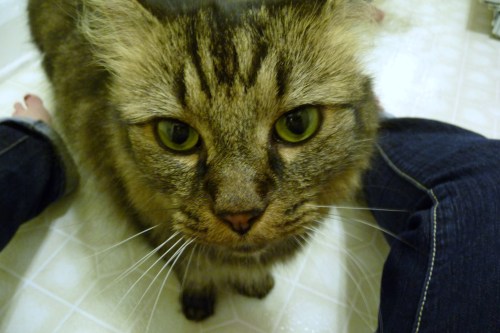
3. The Infant: Did you know there have been empirical research studies showing that cats use high-pitched purrs where the frequency is in a similar range to that of a crying baby, thus triggering humans’ instincts to nurture? While I have not noticed differences in Bailey’s purrs, he does have a distinct chirp/cry for when he is hungry. (He also has a specific cry for when he is about to throw up, which is useful for guiding him away from the carpet.) The hungry cry is desperate and questioning, and he almost always does it when he is in a separate room from everyone else, which just makes it seem more desperate.
The Intended Message: “Hello? Is anyone out there? I’m alone, and hungry, and scared. Don’t you want to rescue me?”
The Effectiveness: Pretty good, as long as he doesn’t start it too early in the morning. But there is clearly something to the research on cats manipulating their cries to evoke responses from humans, because Bailey has perfected his hungry cry to the pitch that simultaneously irritates me and stirs some drive to take care of him.

4. The Mime: Bailey is excellent at charades. Anytime I walk towards the kitchen, he zooms past me towards his food bowl. If I actually enter the kitchen, he will pace between his bowl and the container of dry food, staring at me the entire time. This is the one phase Matilda will participate in. She will actually put her paws on the food container, just in case I couldn’t tell what they were referring to.
The Intended Message: “Hey, you’re in the kitchen, we’re in the kitchen, and hey, look at that! Our food is in the kitchen! It’s right here! All you have to do is open the lid and scoop it out. So easy. Also, we’re hungry. You haven’t fed us in an entire hour.”
The Effectiveness: This is my favorite of Bailey’s strategies. It’s useful for when I actually do need a reminder that they need to be fed. But it’s also easy enough to ignore when the cats are asking for their third breakfast.

5. The Great Communicator: If Bailey does not come snuggle with me around 10:15 in the evening, he mostly likely will sit on the coffee table, attempting to block my view of the television (as fat and fluffy as he is, he’s just not big enough to do this successfully). He makes direct eye contact with me, tilts his head to the side as though engaged in conversation, and mumbles.
The Intended Message: When I say he mumbles, I mean he moves his lips and tongue around, but no sound comes out. It could be nothing more than a Pavlovian response of salivating as he anticipates food, especially since I usually respond with, “Are you hungry?” and he knows that means I’m getting ready to feed him. But I prefer to think that he is trying to break the greatest barrier between cats and humans, and attempting to speak to me.
The Effectiveness: It’s not immediately effective, because it’s really funny to watch, and I try to draw it out as long as possible. “Are you hungry? Do you want your dinner? You want food?” I tilt my head, and he mimics it. It’s adorable. But eventually I feel guilty for teasing him, so I will actually feed him.

6. The Puss-in-Boots: Bailey does not frequently resort to this. I think it is because he knows that you should keep your most powerful weapons hidden away in your arsenal for only the most urgent of circumstances.
The Intended Message: “I do not think you fully appreciate just how cute I am. Let me dilate my pupils fully to reveal my optimum cuteness. If that does not convince you to reward my cuteness with heaping piles of noms, I think I might give up on life.”
The Effectiveness: Oh, it’s pretty damn effective. If Bailey can suffer through a minute of being scooped up and squeezed and hearing, “OMG you are the cutest little B face. I love my favorite boy cat!”, his cuteness and his tolerance are likely to be rewarded with heaping piles of noms.

7. The Temper Tantrum: Fortunately we don’t see this one too often. But sometimes, if Bailey really feels like I am ignoring him, he will sneak up next to me, give his shrieking warning cry, and bite my arm.
The Intended Message: “I hate you. I am a vicious animal. Feed me, or I will eat you in your sleep.”
The Effectiveness: It is not effective. This results in a timeout, in the bathroom so that any spiteful peeing outside the litter box will be easy to clean up.

In case you are wondering what Matilda is doing during all of this, other than occasionally taking part in The Mime, she feigns indifference to eating until the food is being served. While Bailey is busy knocking stuff over and jumping on us, Matilda is typically curled up at the foot of the bed. I have heard about younger siblings sometimes starting to talk at a later age because their older brother or sister will often talk for them. I’m pretty sure that’s essentially what is going on here.

